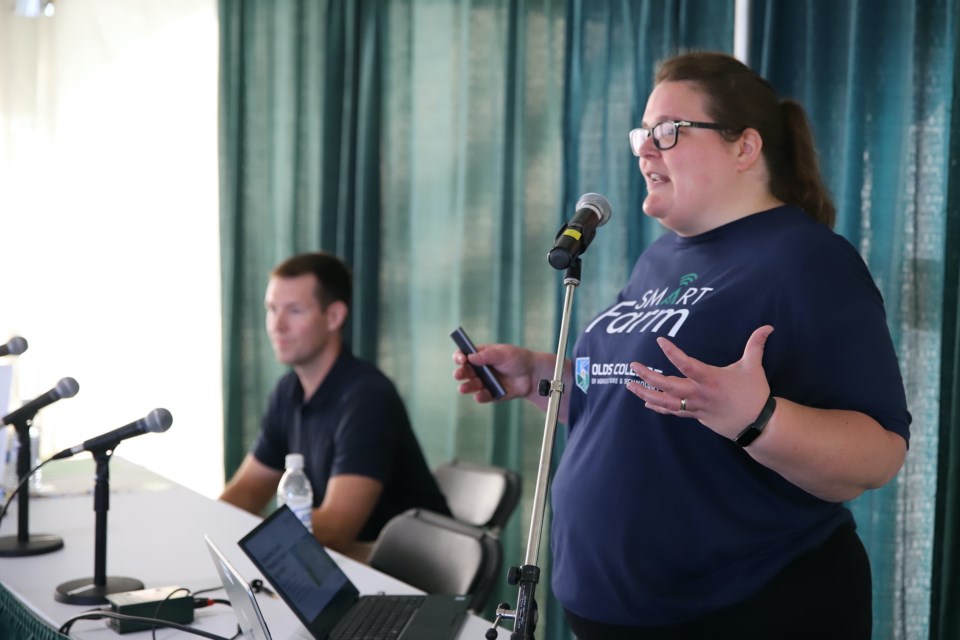OLDS — The Canadian government’s goal to have farmers reduce fertilizer emissions by 30 per cent by 2030 is laudable, but potentially impossible to achieve, speakers at Olds College’s AgSmart agriculture and technology exposition said.
Joy Agnew, Olds College’s vice-president of research and Josh Bourassa of the Simpson Centre for Agricultural & Food Policy, gave that assessment during an AgSmart session Aug. 1.
Agnew said many questions linger about how various figures are being calculated to come up with the 30 per cent by 2030 goal.
“Ag emissions are incredibly complex and highly variable so what is the starting point? And what are we calculating?” she asked.
At the same time, the population of the world continues to expand, challenging farmers to be ever more productive on the same amount of land.
The “gut punch” according to Agnew is that Canadian farmers have been “leading the way” in global nitrogen deficiency practices. Yet, she said, there has been “little to no” recognition of that fact.
"Using the right source of nutrients at the right rate, using the right timing and placement of those nutrients to minimize all the nitrogen dynamics that happen in the soil and the plant soil environment that then results in into omissions. In Canada, many farmers are already leading the way in adopting these practices,” she said.
Agnew said farmers know best how to improve conditions on their land but in the end, they won’t make the changes advocated unless those changes will demonstrably improve their farm and its profitability.
She and Bourassa said incentives will be needed, but will they be enough to reach the government’s goal by 2030?
Agnew cited the adoption of zero tillage – planting directly into the soil in one pass instead of turning the soil over, planting the seed and covering it up in several passes – as an example.
She said it took 30 years for about 80 per cent of farmers to adopt that practice.
She thus questioned how government officials can expect producers to reach the 30 per cent reduction in fertilizer emissions by 2030; just seven years away.
“How are we going to accelerate the adoption of these practices? Because waiting for the natural adoption cycle to happen is not going to not going to get us there,” Agnew said.
Bourassa agreed.
“In many ways, to be honest, I don't see this as being realistic, especially given the six more growing seasons to get there,” Bourassa said.
Fortunately, Agnew said, more sustainable practices can make farms more profitable too because for example, more efficient fertilizer use cuts costs, and fertilizer use is one of the biggest expenses on the farm.
Agnew said the “negative chatter” from some people that farms are “killing the planet” needs to stop and farmers and consumers need to work together to build the trust needed to make change happen.
Bourassa said some private companies are already looking at creating products to help farmers achieve the federal government’s goal.
He cited a company in Calgary that is working on creating an enhanced efficiency fertilizer.
The crowd was told research is showing some potential for pretty large reductions in emissions.
Bourassa was asked how “elastic” he thought the consumer would be when it came to paying more so farmers obtain the money they need to cut greenhouse gas emissions.
Bourassa said that’s a question researchers have asked in general but want to study further.
"It does come down to that,” Agnew said. “What are consumers willing to bear?”
She noted that right now, the cost of food is already a huge issue, due to soaring grocery bills.




